From mid-September to the end of November, the season for edible chestnuts arrives in European countries, turning this nutritious nut into a sought-after commodity. Roasted and fresh chestnuts are purchased by consumers at prices ranging from 9.5 euros per kilogram and above, making edible chestnuts increasingly attractive for cultivation. EastFruit will provide more details about edible chestnuts.

Edible chestnuts (Castanea sativa) are nutrient-rich nuts popular in many countries worldwide. The European chestnut, also known as sweet chestnut, is a perennial plant belonging to the beech family. It serves as a valuable source of honey, nuts, and is also cultivated for its ornamental value. A single tree can yield 100-200 kilograms of fruits, which have been used for centuries in various culinary forms – raw, roasted, boiled, baked, dried, and processed into flour. For instance, in Corsica, chestnuts are a staple food, and chestnut flour has gained popularity due to trends in healthy and gluten-free eating.
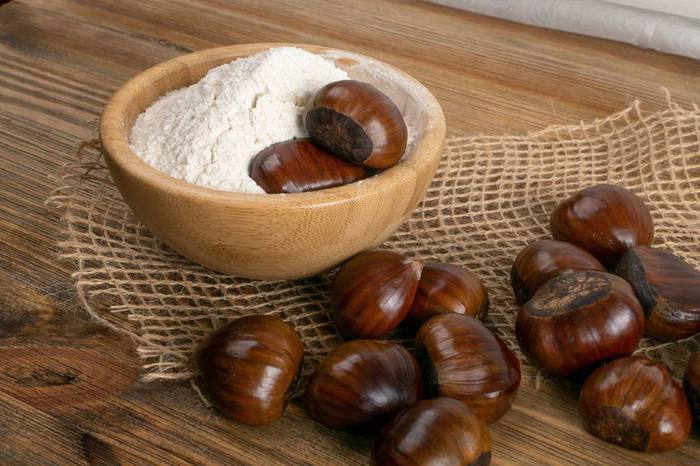
In Ukraine, this product is available at a price of 11,000 hryvnias per 25 kilograms. It is mostly known to enthusiasts of experimental cuisine, fans of new food products, visitors to international gastronomic events, and patrons of health food stores.

Compared to other gluten-free flours, chestnut flour has a texture most similar to ground wheat, making it a versatile substitute in baking, where gluten-free versions often struggle to replicate the desired consistency. With its high plasticity, chestnut flour is a universal replacement for the most popular wheat flour. Additionally, it has a nutty aroma and a sweet undertone in taste. Another advantage of chestnut flour is its high protein and fiber content compared to other flours of its kind, providing a prolonged feeling of satiety and positively influencing intestinal peristalsis.

In conclusion, the edible chestnut, with its diverse culinary applications and health benefits, represents not only an autumnal delight but also a profitable niche in the agribusiness sector. As consumer interest in unique and nutritious products continues to grow, the cultivation of edible chestnuts proves to be a promising venture for farmers and agribusiness entrepreneurs alike.
In industrial production, ground chestnuts are used as filling or topping for cakes, cookies, ice cream, pastries, and candies. In powdered form, they can serve as a coffee substitute due to their high carbohydrate content. Because of their carbohydrate richness, chestnuts are sometimes processed into food alcohol. In Corsica and Switzerland, chestnuts are used to brew beer, while in Italy and France, they are utilized in liqueur production.
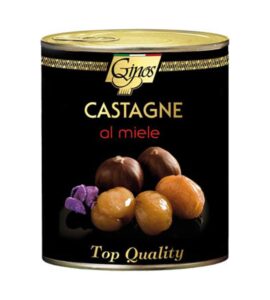
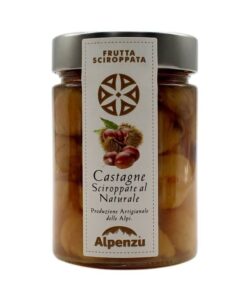
Western European countries adopted the consumption of edible chestnuts from the Mediterranean.
Currently, edible chestnuts are popular in Italy, Spain, France, Greece, Turkey, China, and Japan. In these countries, chestnuts are widely used in culinary applications, added to various dishes, or consumed as snacks.

The prevalence of chestnuts depends on climatic and soil conditions, as well as dietary traditions in different regions. It’s also crucial to note that the culture of consuming chestnuts may be linked to local religious and cultural traditions.
Edible chestnuts are rich in carbohydrates, proteins, iron, and vitamins, making them a valuable source of nutrients. They also contain antioxidants that can help protect the body from various diseases.
Moreover, chestnuts are a natural source of energy, making them beneficial for consumption during periods of intense physical activity or mental strain.
In Eastern European countries, particularly in Ukraine, edible chestnuts are more popular in the western part of the country, in Zakarpattia. Edible chestnuts are widely used in Ukrainian cuisine to prepare various dishes, including chestnut puree, soups, pies, and desserts. Chestnuts are also popular as snacks, either roasted or boiled.

In Ukraine, edible chestnuts can be more commonly found in local markets and supermarkets, with prices around 400 hryvnias per kilogram.
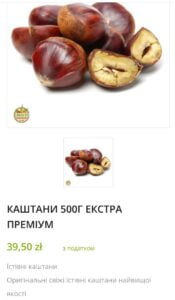

The cost of edible chestnut seedlings in Ukraine is approximately 70-140 hryvnias per piece. Tested and viable chestnut seeds are also available.
In Europe, a kilogram of fresh edible chestnuts is priced significantly. For example, in Italy, the cost per kilogram of fresh edible chestnuts varies from 7 to 10 euros, while the price of roasted chestnuts, prepared right on the street, starts from 9.5 euros per kilogram. Italy is renowned for its edible chestnuts.
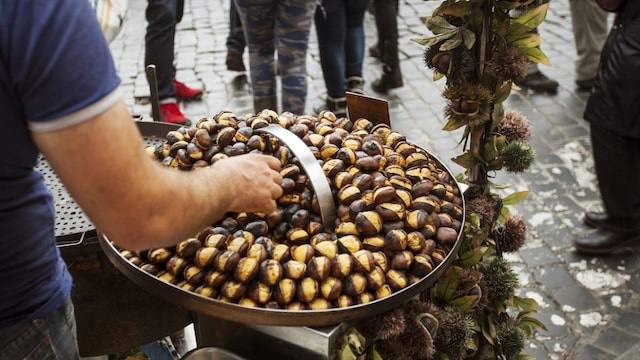
In Italy, edible chestnuts can be found everywhere. “Especially in the Veneto region, there are many chestnuts, primarily in the provinces of Treviso and Vicenza, which are the best places to search for and collect them. However, throughout the region, there are forested areas and the Euganean Hills covered with chestnut groves, where large, soft, and delicious chestnuts grow from September to November. Thanks to the geographical location, hilly terrain, and the climate of Veneto, chestnut groves in autumn are filled with warm colors, giving a magical shade to nature. An example of Venetian perfection is undoubtedly the chestnut variety ‘Marrone del Monfenera,’ known for its powdery, sweet, and delicious texture,” notes Kateryna Zvierieva, Development Director of the Ukrainian Fruit and Vegetable Association (UHA), and Head of the website of the international information and analytical platform East-Fruit.com.
As for Lombardy, Piedmont, Emilia-Romagna, and Tuscany, chestnut groves in these regions are usually private. The birth of the tradition of edible chestnuts.
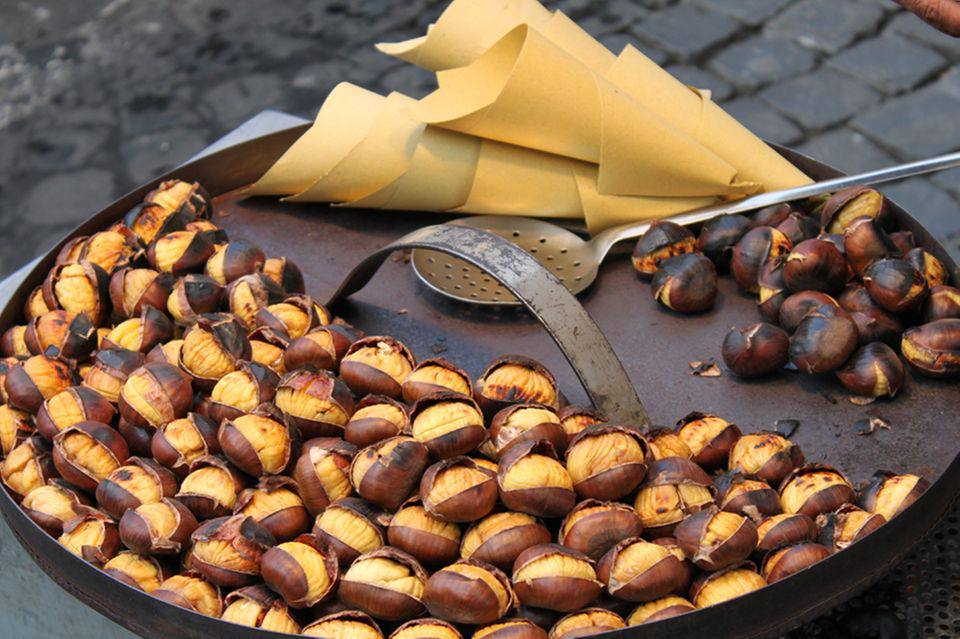
Roasted chestnuts, more commonly known in Italy as caldarroste, have a long and fascinating history dating back to ancient times. While Italians now consume them mainly as a tasty autumn snack, in the past, they played a much more crucial role in society.
In the Middle Ages, chestnuts were considered the “bread of the poor,” especially in mountainous regions where growing grains was challenging. Rich in carbohydrates and fiber, chestnuts became a primary food source for less affluent people. They were not only eaten fresh or roasted but also dried and ground into flour for dough and soups.

This humble food played a fundamental role in times of famine or war. Chestnuts could be stored for an extended period, and due to their versatility, they were suitable for a variety of dishes. Over time, roasted chestnuts began to lose their status as “poor people’s food,” taking on a more festive and cheerful tone. Their presence became an unmistakable symbol of autumn and winter holidays, festivals, and seasonal markets.

Chestnuts or marroni?
Interestingly, in Italy, in places where chestnuts are roasted, you may come across different names: castagni, marroni…
Is there a difference? Definitely!
“The first significant difference concerns their origin. In fact, ‘castagni’ is the fruit of a wild-growing plant that grows spontaneously in groves and hills, also known as the ‘bread tree’ (as it was the food of the poor for a long time). On the other hand, edible ‘marroni’ are the result of breeding, grafting, and plant crossbreeding. When the nutritional value of edible chestnuts was appreciated, people transitioned from collecting chestnuts to their actual cultivation and breeding, leading to the emergence of new varieties of edible chestnuts,” notes Kateryna Zvierieva.
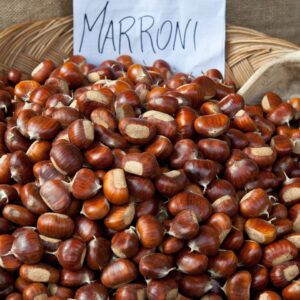
There are also significant external differences between these varieties of edible chestnuts. Wild chestnuts are generally smaller in size compared to marroni.
In terms of taste, wild chestnuts typically have a less sweet flavor, while their cultivated counterparts are sweet and notably crunchy.
Notably, the former are more suitable for making flour, creams, or baking, while the latter are excellent for preparing “marrons glacés” or combining them with hot dishes.

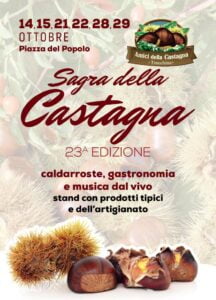
Chestnuts and marroni: Recipes
As an appetizing first course, Italians love to prepare risotto with chestnuts, which has a fantastic aroma and a creamy consistency. Chestnut gnocchi made with chestnut flour is also a distinctly autumnal variation of traditional potato gnocchi. Europeans also enjoy chestnut soup and traditionally cook chicken and goose with chestnuts.

For dessert, a chestnut pie and chestnut cream work well, along with the delicious “Mont Blanc” dessert based on chestnuts with cocoa and whipped cream.

The aroma of roasted chestnuts wafting through the cool air is one of the symbols of October and November, capable of bringing people of all ages together around a warm fire, the crackling of chestnuts, and the harmony of autumn. For farmers, it represents an interesting and profitable niche.

The use of the site materials is free if there is a direct and open for search engines hyperlink to a specific publication of the East-Fruit.com website.




